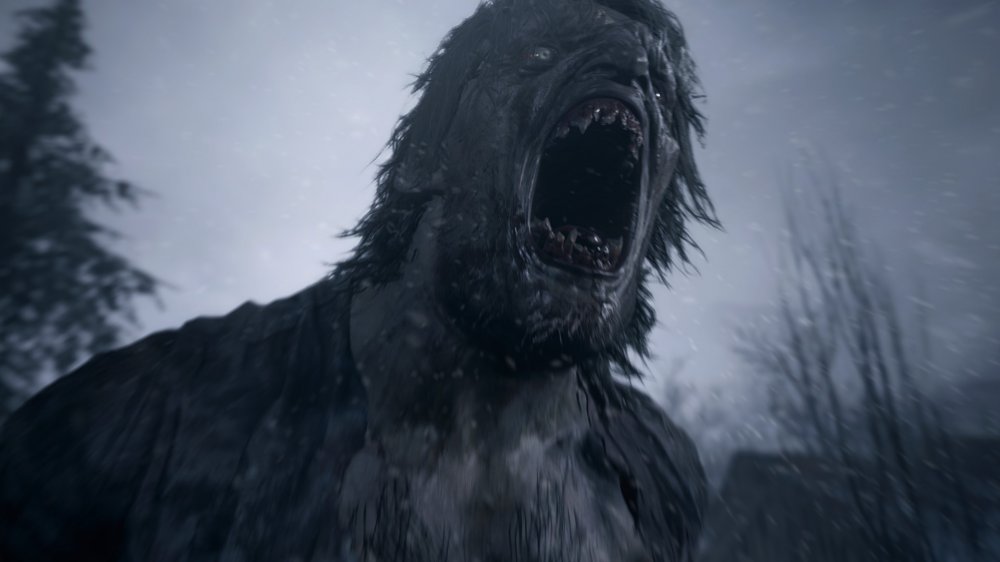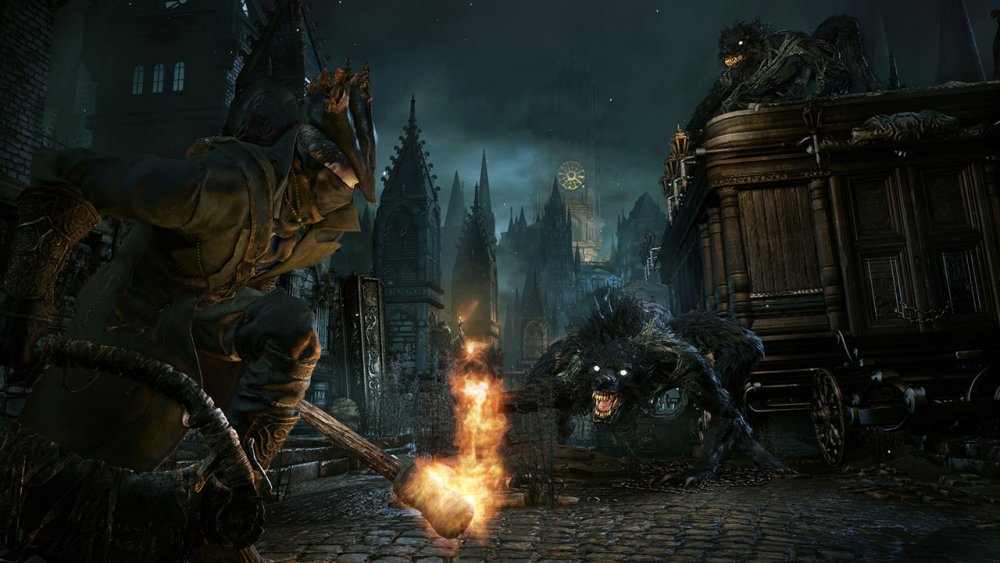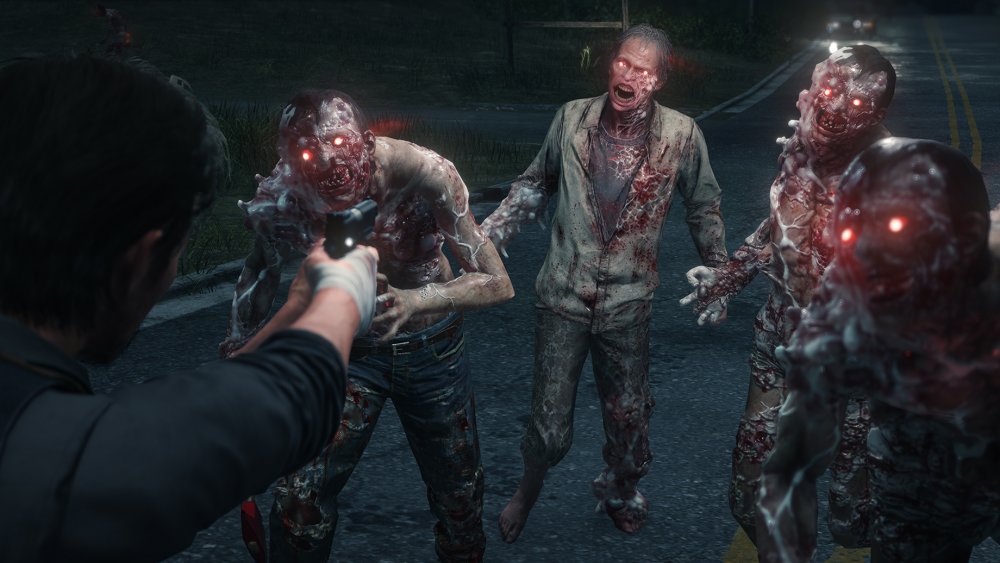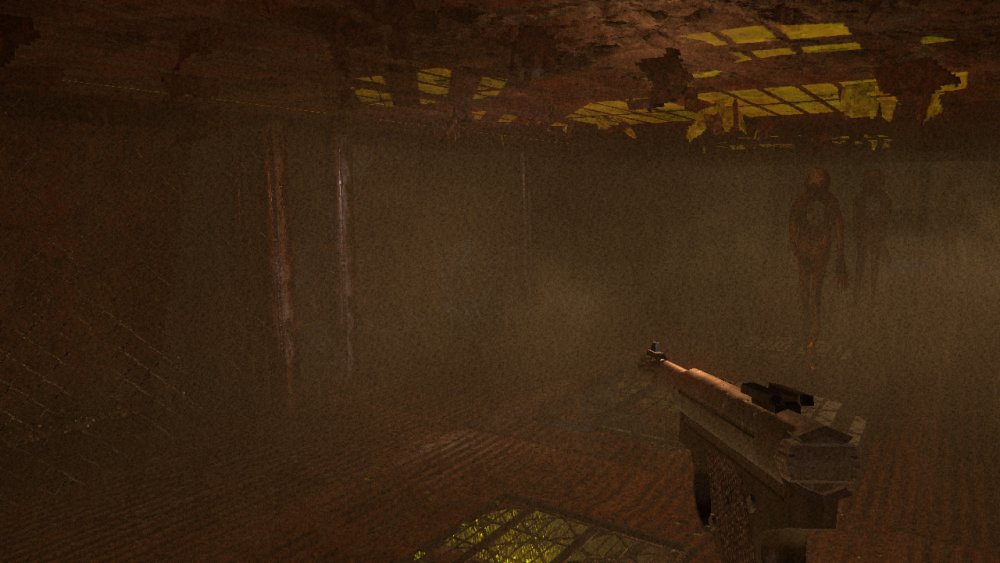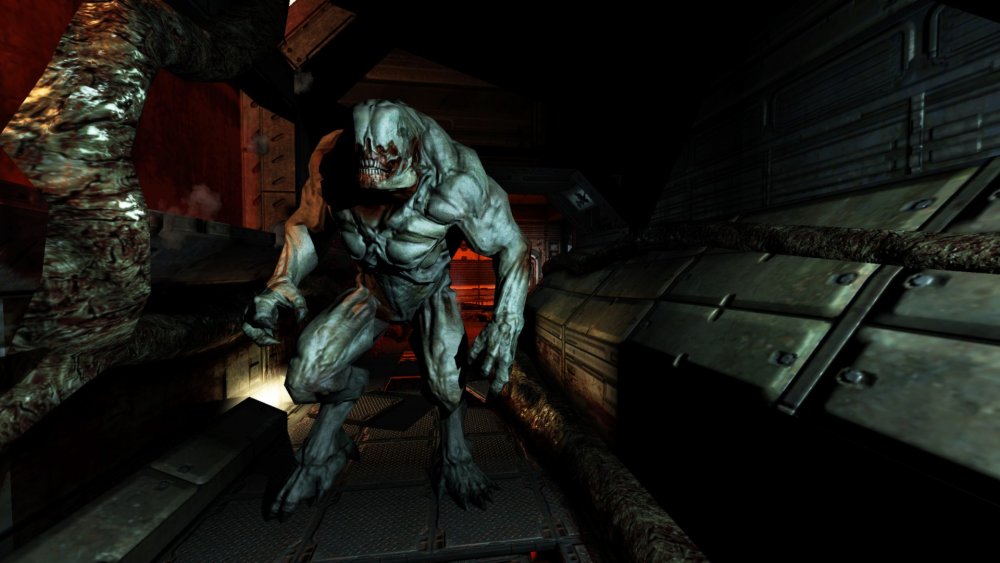Games You Should Play While Waiting For Resident Evil 8
Video game announcements are a double edged sword. A trailer, teaser, or even a simple Twitter tweet can ignite the fire of anticipation, but this excitement is sometimes short-lived. The Resident Evil 8 reveal, for example, dominated a significant chunk of the video game industry news cycle. Audiences were excited to finally play the sequel to one of the creepiest games of the decade, but some of that enthusiasm died down when they realized they have to wait until 2021. When in 2021? That's part of the problem: We have no idea.
Resident Evil 8 could launch early in January of 2021, or it might not be ready until the holiday season. Regardless, RE8 is several months away, and you need something to keep you occupied. You could try to finish your backlog of games, or you could scratch your survival horror itch and play a game that channels the essence of Resident Evil 7 or 8 without bearing the RE branding.
If you are craving the latter, this is the article for you.
Bloodborne
When you think about survival horror games, titles such as Bloodborne might not come to mind. In fact, Bloodborne is technically classified as a souls-llke, which is a different genre. But rest assured, Bloodborne has all the hallmarks of a survival horror title. Plus, plenty of fans have called Resident Evil 8 "Resident Evil meets Bloodborne," which is as good an analogy as any.
While the Bloodborne doesn't feature cramped house corridors, the game is nail bitingly terrifying since every enemy encounter is designed to kill you. Add in blind alleyways, darkened buildings, and enemies that love to jumpscare you — often by screaming with one mouth while biting your trachea with another — and you have everything you need for a scary game session.
Moreover, Bloodborne and Resident Evil 8 share a lot of DNA, at least if RE8's trailers are any indication. Both contain a mix of ramshackle buildings and gothic architecture, lycanthropic enemies, and darker secrets waiting below the gothic horror surface. While Bloodborne opts for lovecraftian lore and enemies, RE8 will probably bring back ties to the t-virus and Umbrella Corporation.
Bloodborne is one of the best ways to spend your time waiting for RE8 since virtually everyone is already comparing the games to one another.
The Evil Within 1 and 2
Shinji Mikami is usually credited as the brain behind Resident Evil. He invented many of the franchise's universal rules that are obeyed even after he left Capcom. So, what kind of game did Mikami create after he exited the company that made him a household name? Why, the kind you should play while waiting for the next entry in the franchise he gave birth to, of course.
The Evil Within and The Evil Within 2 are essentially what would happen if Mikami created Silent Hill games with Resident Evil 4 gameplay, RPG-like skill trees and crafting, and stealth. As with Silent Hill, The Evil Within titles feature plenty of horrifying locales that look as though they'd give you tetanus just by staring at them, and the monsters are designed with body horror and symbolism. And, The Evil Within includes a Pyramid Head clone, so there's that.
Moreover, The Evil Within's world follows dream logic similar to that of Silent Hill. Geography twists in on itself to form a labyrinthine collection of MC Escher corridors. Had Mikami not created the hard and fast rule that Resident Evil must follow a verisimilitude of reality, the franchise might look something like The Evil Within.
Lost in Vivo
Usually, video games require a team of developers, but every so often a game is produced by one person. These solo projects are feats that speak volumes of the skill and patience of one person, but when these games shine with a level of polish that exceeds many AAA games, that's when audiences start talking.
Lost in Vivo took the internet by storm when it released in 2018. The game starts with a simple enough premise: Your dog is washed away in a freak storm, and you have to go into the sewers to rescue it. What follows is a series of underground hellscapes, time-lost abominations, and the nagging question of whether you're experiencing something real, or you're living the fevered delusions of the game's protagonist. After all, the title alludes to the in vivo exposure style of therapy where patients face their fears head-on. Classic unreliable narrator trope.
This game borrows many narrative and thematic ideas from Silent Hill, but it also apes mechanical ideas from Resident Evil, such as save rooms, various endings, and extra game modes. Mikami would likely approve of Lost in Vivo's means of keeping players entertained after they beat the game.
Doom 3
If you played the original Doom games or the recent reboots, you might wonder what the franchise has to do with survival horror. The games supposedly rely on fast-paced action, ripping and tearing through the legions of hell with a chainsaw in one hand and a shotgun in the other. However, one game stands apart from the rest of its adrenaline-fueled brothers: Doom 3.
Doom 3 is slow by design. Instead of focusing on action and BFG gunplay, the game tries to put you in the shoes of someone who fears demons, not someone who sees them as ammo pinatas. This change in pace gives Doom 3 a survival horror feel, accentuated by the game's Mars base. Every corridor is dimly lit, and demons relish the darkness. Do you navigate the hallways with a flashlight, or whip out your gun to fend off monsters that want to swallow your soul? You can't have both.
Moreover, this game is one of the few Doom titles that uses a healthy dose of jumpscares, but not so frequently they wear out their welcome. While id Software didn't employ the Doom 3 formula for the reboots, the developers still crafted a unique title that doesn't reveal its survival horror leanings until it's too late.

